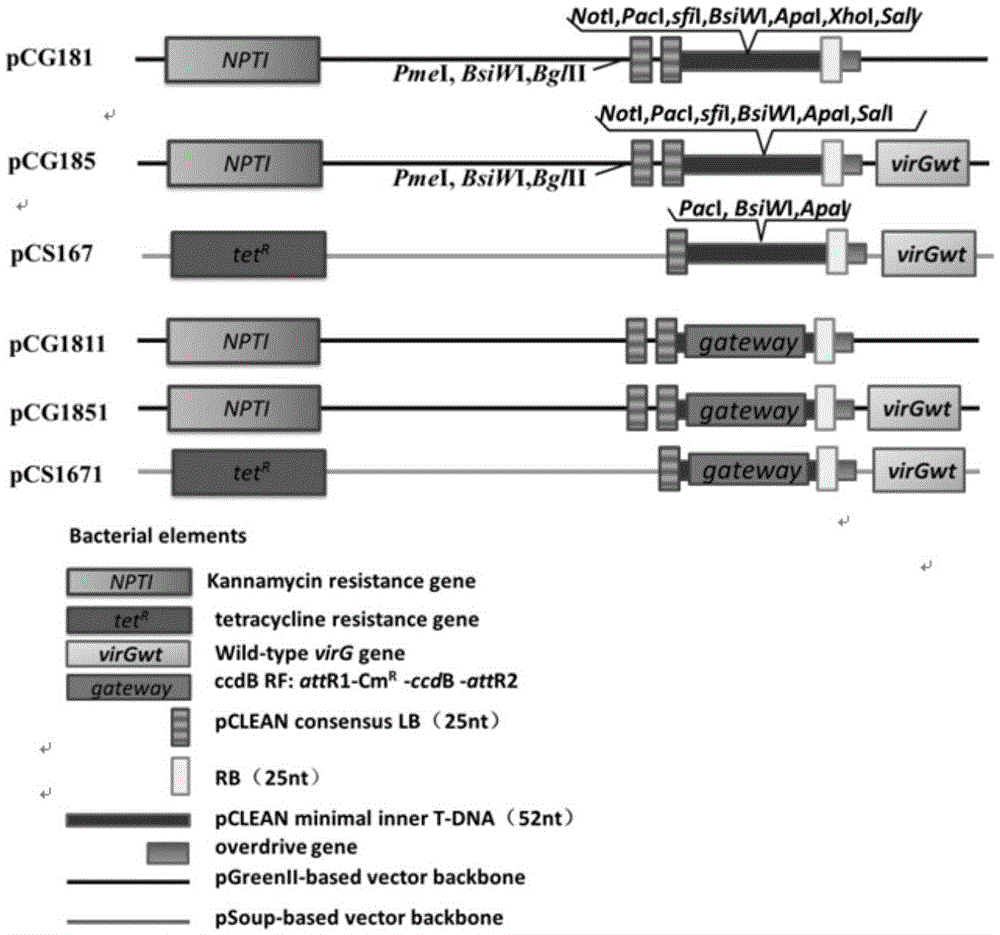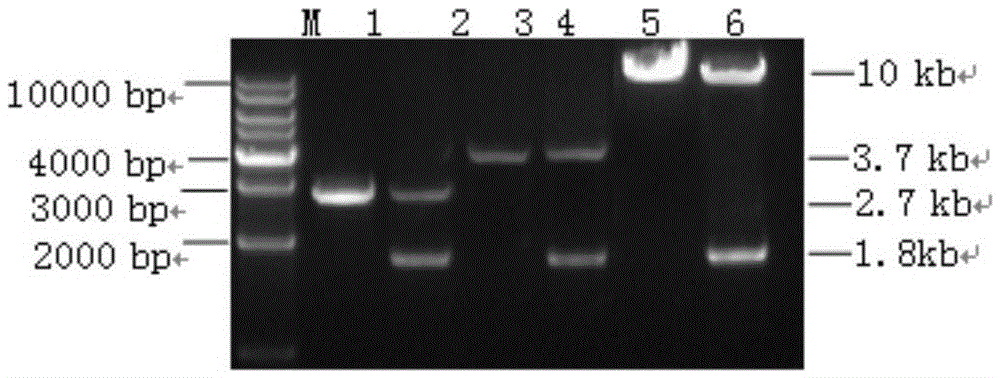A kind of Agrobacterium transformation vector composition for obtaining marker-free transgenic plants and its application
A technology for transgenic plants and marker genes, applied in the field of Agrobacterium transformation vector composition, can solve the problems of inconvenient target gene replacement and application that have not been reported yet
- Summary
- Abstract
- Description
- Claims
- Application Information
AI Technical Summary
Problems solved by technology
Method used
Image
Examples
Embodiment 1
[0081] Example 1. Agrobacterium-specific vector composition for obtaining marker-free transgenic plants
[0082] 1. Construction of Gateway-compatible pCG1811, pCG1851, pCS1671 universal binary vectors
[0083] The structure of pCG181, pCG185, pCS167 vector is as follows figure 1 , the DNA fragment attR1-cm inserted into the ccdB reading frame in its T-DNA, respectively R -ccdB-attR2 (the nucleotide sequence of the DNA fragment is sequence 3 in the sequence table, purchased from Invitrogen Company), to obtain binary vectors pCG1811, pCG1851, pCS1671; the specific process is as follows:
[0084] 1. Construction of pCG1811 vector
[0085] 1) Obtaining the P-free blunt-end vector backbone
[0086] The pCG181 vector was digested with NotI, and the 2718bp digested product was recovered; then the above-recovered digested product was sequentially filled with Klenow fragments to blunt the protruding end, purified, and de-P reaction to obtain the P-depleted blunt-ended pCG181 vector...
Embodiment 2
[0193] Example 2. Application of Agrobacterium-Specific Vector Composition for Obtaining Marker-Free Transgenic Plants
[0194] 1. Transformation of Agrobacterium with special carrier composition for Agrobacterium
[0195]After mixing the carriers in each carrier composition obtained in Example 1 at a mass ratio of 1:1, transform Agrobacterium AGL1 into 2×YT solid medium (containing 200mgL -1 Carb, 100mg / LKan) were coated on the plate, cultured in the dark at 28°C for 48h, and the recombinant bacteria AGL1 / pG1811-UG / pS167-UB (1G7B), AGL1 / pG1851-UG / pS167-UB (5G7B), AGL1 / pG1852- UG / 154 (5BTG154), AGL1 / pG1853-UG / 154 (5LBTG154) and AGL1 / pG1854-UG / 154 (5TBTG154) ( Figure 9 ).
[0196] Use gusF / R and baF / R primers to amplify the above-mentioned recombinant vector to obtain products of 1051bp and 444bp, which are positive recombinant bacteria.
[0197] AGL1 / pG1811-UG / pS167-UB (1G7B) identified as positive was named 1G7B (pG1811-UG / pS167-UB);
[0198] AGL1 / pG1851-UG / pS167-UB (5G7...
PUM
| Property | Measurement | Unit |
|---|---|---|
| separation | aaaaa | aaaaa |
| separation | aaaaa | aaaaa |
Abstract
Description
Claims
Application Information
 Login to View More
Login to View More - R&D
- Intellectual Property
- Life Sciences
- Materials
- Tech Scout
- Unparalleled Data Quality
- Higher Quality Content
- 60% Fewer Hallucinations
Browse by: Latest US Patents, China's latest patents, Technical Efficacy Thesaurus, Application Domain, Technology Topic, Popular Technical Reports.
© 2025 PatSnap. All rights reserved.Legal|Privacy policy|Modern Slavery Act Transparency Statement|Sitemap|About US| Contact US: help@patsnap.com



